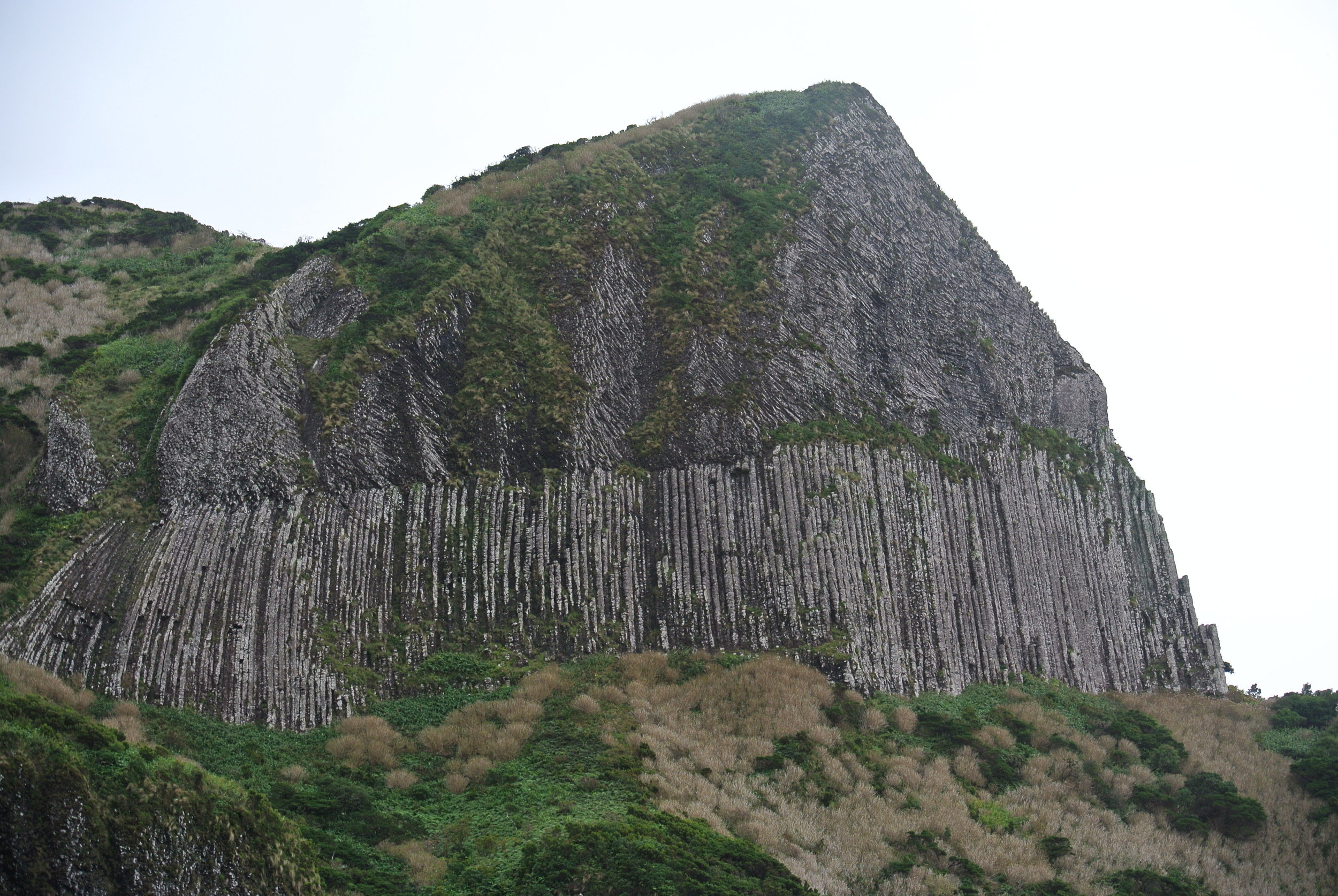This massive rock formation shows how two different tectonic plates interacted with each other.
The vertical striatiions are caused by one plate, while the top portion of rock is caused by a different plate. Looking at these rocks is a great way to see how the earth beneath your feet came to be, and it tells you how they interacted with each other.
Sedimentary rock forms by many layers of deposition occurring over a long period of time. The end result is a rock that will have striations that correspond to the different layers that were laid down over the eons. The thing with sedimentary rock is it is always laid down horizontally. To generate these vertical lines, the entire rock formation had to be turned on its side!
Rock may seem rather hard and unwieldy, but it is rather flexible, you just have to zoom out quite a bit. Instead of focusing on a single stone, it is best to focus on the entire plate itself. Just how a block of wood is rather hard to bend, if that same type of wood were on a long board, you could cause it to bend! As two tectonic plates are pushed together, the forces on them will cause the edges of the plates to flex in various ways. Either both edges will go up and form mountains, or one edge will go up while the other edge is forced under the top plate. The top plate will then flex upwards, and in extreme circumstances, will flex all the way until the striations in the rock are vertical!
That explains the bottom portion, but what about the top piece? If the top plate got pushed upwards to create the vertical lines, how did the other rock get ontop of it?
The Earth’s history is written in the rocks you see right before your eyes like a book; all you need to do is sit down and read it. The vertically striated rock did climb up and over another plate to cause the sedimentary lines to become vertical, but no one said anything about what happened before that time. The other rock on top is telling us that long before the vertical edge turned up, it was previously under another piece of rock. As it rotated and turned upwards, it pushed the rock that was on top of it already upwards and high into the sky, creating this massive mountain structure where you have vertical lines with garbled stone above it.


